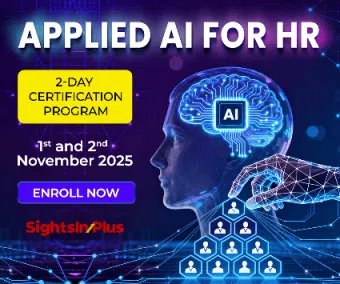We have all learned from our industry and network about new Rewards and Recognition (R&R) programs and replicated them in our organisation. Sometimes, it has worked fantastically, and sometimes there has been no change.
What works well & what doesn’t? Some companies have already developed their secret sauce, while others are in the process of creating it, and some may not realize what makes it right for them.
Rewards management isn’t just about handing out bonuses or perks—it’s the secret sauce that drives organizational success and keeps employees happy. At its core, rewards management involves the strategic design, implementation, and optimization of programs aimed at recognizing and appreciating employees’ contributions beyond compensation.
This approach goes beyond mere monetary incentives to encompass a comprehensive framework that aligns with organizational goals and values. Launching a Rewards scheme that doesn’t serve organisational & People’s objectives are as good as not launching or having them.
Rewards management entails more than just distributing bonuses or perks; it’s a systematic approach to acknowledging and motivating employees based on their performance, achievements, and behaviors that align with organizational objectives. By leveraging rewards effectively, organizations can foster a culture of appreciation and excellence, driving employee engagement and retention.
What are the key elements to define a successful & sustainable Rewards strategy?
- DO a needs assessment: Before designing the rewards program, conduct a thorough needs assessment. Gather feedback from employees, managers, and key stakeholders to understand their preferences, expectations, and perceived gaps in the existing recognition framework. This assessment will provide valuable insights into the types of rewards that are most meaningful and motivational for your workforce.
- Strategic Alignment: Effective rewards management begins with aligning reward systems with the organization’s strategic objectives and core values. This alignment ensures that rewards reinforce desired behaviors and contribute to the overall success of the business. This ensures its not on performance but also ensuring walking on Core values.
- Comprehensive Program Design: We keep debating what works best, monetary or non-monetary. A well-designed rewards program incorporates a mix of both monetary and non-monetary incentives tailored to meet the diverse preferences and motivations of employees. This may include bonuses, recognition awards, career development opportunities, and other forms of acknowledgment. Develop a balanced rewards structure that includes both monetary and non-monetary incentives. Strive for a mix of immediate, short-term, and long-term rewards to cater to diverse employee preferences and motivations.
- Segment Your Workforce: Recognize that different employee groups may have varying needs and preferences. Segment your workforce based on factors such as job level, generation, life stage, or job function. This segmentation allows for more targeted and effective total rewards offerings. For example, if you have Customer-facing roles and operational roles, create common but also separate programs, ensuring it is addressing the right need & serving results.
- Develop Implementation Plans: Create the plan to implement your total rewards strategy. This includes timelines, resource allocation, and responsibility assignments. Consider phasing in changes if you’re making significant adjustments to your current program. Develop communication plans to effectively convey the new strategy to employees. Also, create training programs for managers who will play a key role in implementing and explaining the new total rewards approach
- Equal participation: Organisational buy-in is considered by aligning strategic objectives & values; however, having People’s buy-in is equally important. Ensure people understand, participate not just in working towards gaining but nominating, acknowledging, and becoming brand ambassadors of the schemes.
- Fairness and Transparency: Transparency in reward criteria and processes is essential for maintaining employee trust and satisfaction. Clear communication about how rewards are determined promotes fairness and motivates employees to strive for excellence.
- Promote Recognition and Celebrate Achievements: Create a culture of recognition where achievements and milestones are celebrated openly and consistently. Encourage managers and peers to actively acknowledge and appreciate exemplary performance through informal praise, team meetings, or dedicated recognition events. Publicly highlight the impact of rewarded behaviors on organizational goals to reinforce their importance.
- Continuous Evaluation and Adjustment: Rewards management is not a one-time effort but an ongoing process of evaluation and adjustment. Regularly assessing the effectiveness of reward programs through feedback mechanisms, surveys, and performance metrics allows organizations to refine strategies, address emerging needs, and optimize the impact of rewards on employee morale and performance. Use these insights to refine and adjust the rewards strategy to better meet the evolving needs of the workforce and the organization.
Whats interesting & critical is while conceiving, executing and communicating Rewards strategy, it should serve, connect with intrinsic & extrinsic motivation drivers of people, though nothing might be 100% fit for all but if you can drive sustainable strategy with a powerful yet simple execution, you are able to establish right mix of Employee value preposition for your Organisation.
Note: We are also on WhatsApp, LinkedIn, Google News, and YouTube, to get the latest news updates. Subscribe to our Channels. WhatsApp– Click Here, Google News– Click Here, YouTube – Click Here, and LinkedIn– Click Here.



